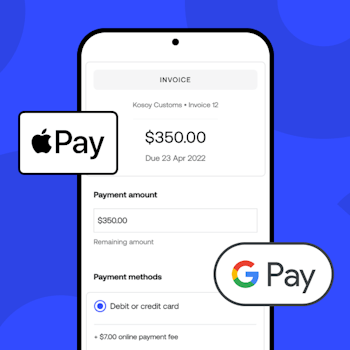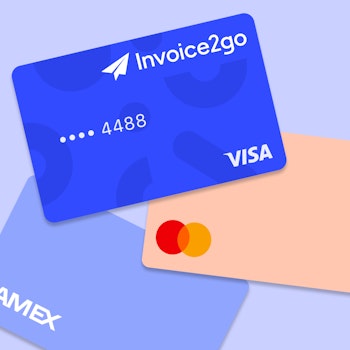
How to close more sales by staying organized
Staying organized: It’s easy to aspire to but difficult to achieve. Especially if you’re busy freelancing or running a small business, there are already so many short-term action items on your plate that it’s natural to put off long-term goals like improving your organization – even if you know somewhere in the back of your mind that it would probably help.
Still, getting organized is worth it – both for your mental health and bottom line. Here are just a few points to consider:
- According to a survey by Pixie, an iPhone location app, the average person spends over six months of their lifetime searching for lost items. The stress that comes with not finding what you’re looking for can wear on your overall mental health.
- An article published in Forbes compares chronic disorganization to “a slow leak that can cost up to hundreds or thousands of dollars every year.” Bank fees, tax penalties, misplaced checks, lost cash, and missed opportunities are just a few ways being disorganized hurts your business.
- Decluttering and getting organized can boost your energy and give you a greater sense of control, according to Healthline.
The good news is that technology can help. In our case, that means a feature called Projects, which enables you to keep your estimates, invoices, photos, files, notes, and contact information in one place. However, there are plenty of ways to get your organization on point, and the most important thing is that you take steps in that direction.
Looking to grow your business and smooth out your workflow? Here are 5 organizational strategies to help you on your way.
1. Stay organized from the get-go
Start collecting information from your first conversation with a prospect. If you’re an Invoice2go subscriber, you can use Projects to create a new file where you can jot down their name, the date, and the conversation details. Then, you’ll be able to reference this information quickly and not have to wonder if you forgot something.
Using a digital system makes it less likely you’ll lose files or amass clutter. You’ll have all your estimates, invoices, photos, files, notes, and contact information organized and accessible from your phone or computer. Whether you’re at your desk or a project site, you can easily pull up the information you need, on the spot.
Here are a few real-life examples of how staying organized with a digital system like Projects can help you, regardless of your industry:
When Jason Ramsey of California Flooring Service does a walkthrough with a customer, he jots down notes and asks questions. Then, as soon as he gets back to his truck, he turns that information into an estimate and immediately sends it. He cites this speed as a competitive advantage that’s helped his business win more work. Similarly, Peggy Hannis, a freelance American Sign Language Interpreter, collects all the necessary information and sends her invoices before driving home from work to ensure she gets paid faster.
Beyond winning more work and getting paid faster, using a digital system allows you to manage the profitability of your work holistically. In a recent interview with Invoice2go, Armond Luisi of Scenic Isle Landscaping explained, “Last week, we did a job that required numerous receipts – there were probably eight or nine of them. So, as I'm picking up the items to get the job done, I just snap a picture of the receipt and put it into the file. Then, for each job, I can tell exactly what I'm making and what my profit is. I also have a backup for hardcopy receipts.”
2. Clearly define your scope of work and make detailed estimates
As you gather information from your clients, create a scope of work. Define cost, timeline, and details of your service. If applicable, add photos and customer notes. Here are a few areas to focus on that’ll help you stand out:
Appearance
Attractive and professional-looking estimates can help build trust. Handwritten notes or emails with typos may hurt your business – even if you’re phenomenal at your craft. Consider adding your logo and branding.
Timeline
So many businesses over-promise and underdeliver. Aim for the opposite! Check your calendar and map out the dates when you’ll complete each milestone and the entire project. Include some buffer time to account for the unexpected. Communicate early and honestly about any timeline changes, and protect your mental health by not spreading yourself too thin.
Budget
While it may feel uncomfortable, be explicit about the project’s total anticipated cost from the beginning. Whether you charge flat fees or hourly rates, break down how much your customers can expect to pay. If there are costs for materials or other expenses, list them. Don’t undercharge with the hopes of winning the sale because this often leads to frustration for both you and your client. Know your worth!
Social proof
It can help to share reviews from other customers and images of recently completed projects. You can add a link to your website or directly share this information with your prospect via email or social media.
3. Create a follow-up system
Sometimes the stars align. You connect with a customer, they absolutely love your work, and they’re immediately reaching for their wallet to make it rain on your business.
However, for most, this is rare. In fact, according to Marketing Donut, it takes, on average, five follow-ups to close a sale. The number of follow-ups depends on your industry, reputation, and other factors. Still, doing them thoughtfully and consistently can take your business to new heights.
Following up doesn’t mean bugging customers or hard-selling. It’s about building a relationship, establishing trust, and letting customers know you’re ready when they are. Decide when and how you’re going to follow up with clients.
Make your communication as personal as possible
When interviewing prospects, ask them how they like to communicate. Do they prefer to text or catch up on Zoom? Make a note and contact them the way they prefer. Keep in mind that while email and text messages may be fast and convenient, they’re also less personal. Video or phone calls can help establish rapport and ensure nothing slips through the cracks as you begin to collaborate.
4. Make a schedule to manage your sales pipeline
While you may prefer to be working on your craft, investing time into developing an organized process for managing your sales pipeline can open more opportunities to pursue your passion. Here are a few tips for your schedule:
Follow-up Friday
Pick a day – Friday or any day – to go through your leads and pending estimates and reach out to those customers. If you’re an Invoice2go subscriber, you’ll be able to find this information easily in your account.
Set specific follow-up times
Many freelancers and small business owners make the common mistake of leaving follow-up times vague. By being more specific about when you’ll reconnect, you establish more explicit expectations.
Not everyone will be ready right away. If a prospect needs time to think about your proposal, set a specific time to reconnect. You could say something like, “No problem! Is it ok if I check with you next Tuesday at 2 pm?” or even, “It sounds like now’s not the right time. How about we check in 3 months from today, on September 3rd?” The right time to follow up will depend on your industry and the information you get from your customer.
Follow up when you say you will
Whatever time you and your customers agree on, enter it into your calendar and reconnect with them when you say you will. While a quick follow-up may sound simple, it can be hard to do this in an organized way when you’re busy running a business. Set up a system with Google Calendar or another service you like.
If a customer tells you they still need time to think when you follow up, set the next time to connect and make a note. Continue doing this with your prospect until you get a definitive “no.”
5. Continually set goals and track your progress
What do you want to achieve in the next quarter? In the coming year? Taking the time to get organized and set specific intentions will motivate you to get more of what you want. You’ll also gain a sense of whether you’re on the right track and getting closer to your version of success.
Here are just a few tips to get you started:
Use SMART goals
SMART stands for specific, measurable, achievable, relevant, and time-bound. Including all these elements in your planning will add substance to your goals and increase your chances of achieving them.
Check out this example:
- Overall goal: I want to grow my freelance business.
- Specific: I’ll add three new clients and make $1k more each month.
- Measurable: I’ll keep track of the new clients while maintaining my current customer base.
- Achievable: I have three spaces open in my calendar at the moment.
- Relevant: Adding these clients will allow me to grow my business and increase my income.
- Timely: I will achieve this goal within three months.
Once you’ve set your goal, break it into daily or weekly actions – like managing your sales pipeline. Also, review your analytics each week to see how you’re tracking towards your goals. If you use Invoice2go, Reports shows you the number of clients you’ve invoiced and your monthly revenue, helping you stay accountable to yourself.
By getting organized and putting these strategies in place, you’re on track to get more of what you want out of your business and have more time to do the work you love.
Related Articles

How to accept credit card payments on Invoice2go in 3 simple steps

Accept payments online via Apple Pay and Google Pay

Must-not-miss write-offs as you wrap up 2022 year-end finances

5 ways accepting credit and debit card payments helps your business stay resilient

4 easy ways to increase cash flow today

What is Small Business Saturday and why is it important?
The features and surprising benefits of a well-designed packing slip
